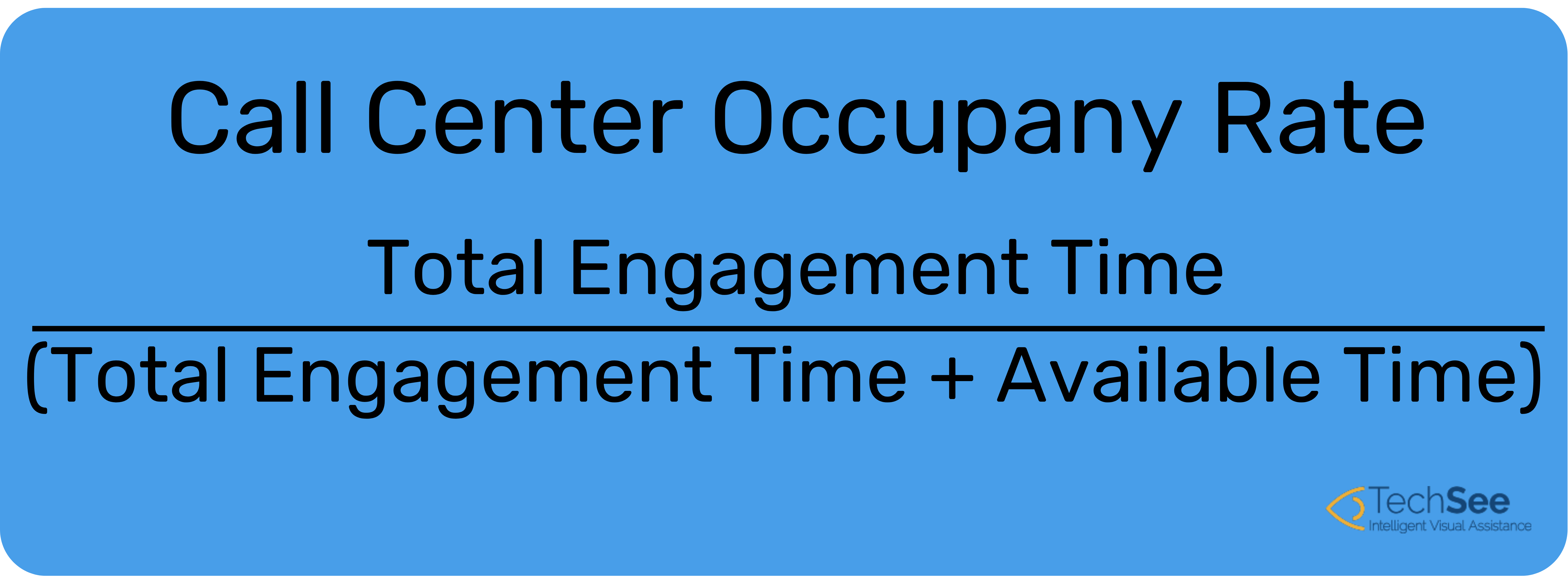Contents
In today’s age of customer-centric service, call centers must deliver quick answers, short hold times, and the ability to speak to a live representative on demand. How can Management ensure their call centers are up to par? They can either staff up significantly or improve their call center occupancy.
What is Occupancy in the Contact Center?
Occupancy measures how much time call center representatives spend engaging with customers when they are at work as opposed to non-productive or idle time. Call-related activities include time spent on calls, engaged in after-call work (ACW), or on hold.
How Are Occupancy and Utilization Related?
While these metrics measure agents’ productivity, occupancy only considers the time agents are active when logged in, while utilization includes total work time. This means that to measure occupancy, Management would look only at the agent’s capacity to engage with customers vs. the time actually spent engaging with customers. For example, team meetings or training would not be included in the equation because agents would not be capable of engaging with customers during that time. When measuring utilization, on the other hand, all time on shift would be included, as the goal is to measure the overall efficiency of the call center’s processes.
How to Calculate Contact Center Occupancy Rate
Occupancy rate is calculated as the percentage of time agents spend handling customer inquiries vs. other idle time. The formula:
For example, if your call center has an occupancy rate of 85%, it means that your agents engage with customers for an average of 51 minutes out of every 60. However, it is essential to consider the other factors involved in this “engagement” – it’s not just actual talking time; rather, this metric also includes hold time and ACW needed to wrap up the conversation.
Why is Occupancy Metric Important?
Understanding your call center’s occupancy rate is important for managing the daily activities of your agents, and ensuring that your call center is optimized for efficient and effective operations. This metric will provide essential insights into whether your current call center staff can handle the incoming inquiry volumes, whether you are overstaffed or understaffed at particular periods of the year, whether your agents are maximizing their time spent with customers, or whether more training is required.
If a call center’s occupancy rate is below average, it means that agents are not being as efficient as they could be, spending too much of their time on non-call-related activities, and risking customer satisfaction.
If the rate is consistently above average, agents are “on” at a very high rate and are at risk of burnout. Scheduled breaks are vital to the call center’s environment and staff mental health. Monitoring occupancy is important to ensuring staffing levels are optimal and for preventing agent overwork and burnout.
Occupancy Benchmark Per Customer Service Channel
Customers have varying expectations of different service channels. When a customer picks up the phone to call a customer service center, it is understood that there will be some wait time, time spent explaining the problem and finding a resolution. When a customer emails a company about an issue, it is understood that a response will not be immediate. On the other hand, customers have higher expectations for channels that are generally understood to provide automated responses, such as text, chat or other web-based self-service options.
These expectations directly relate to the varying benchmarks per customer service channel. For phone calls, the average call center occupancy is between 80-90%. This seems to be the sweet spot necessary to balance appropriately between efficiency and agent burnout. In other channels, such as email or chat, occupancy can be set higher. With email, staff can be involved with writing or replying to customers at a 90-100% occupancy rate. Chat can even see an occupancy rate of more than 100%, as agents can multi-task and engage with more than one chat at a time.
| Service Channel | Occupancy Rate Benchmark |
|---|---|
| Telephone | 80-90% |
| 90% | |
| Chat | 100% |
Is A Higher Occupancy Rate Always Better?
When demand increases and calls are coming in fast and furious, one may think call centers should strive to improve their occupancy rate. But in fact, when agents rush to answer each customer’s inquiry, they spend less time with each customer, resulting in decreased customer loyalty and satisfaction. They miss out on opportunities to wow customers by personalizing interactions and to upsell customers by recognizing opportunities for revenue generation.
By allowing for a lower occupancy rate, agents may spend less time answering customer inquiries, but they will have more time to gain additional skills and training that will ultimately improve performance and lower call center attrition.
Call center Management must strive to find the sweet spot of call center occupancy: high enough for efficient call center operations and satisfied customers, but low enough for a positive agent experience.
How AI and Automation Can Optimize Occupancy
When AI and automation are implemented in the call center to handle simple, repetitive tasks, agents are granted additional time to focus on more strategic tasks or priority customers. As automation deflects customers from the live agent queue, occupancy rates decrease, yet customer satisfaction soars, and the call center saves money too.
For example, many contact centers have embedded IVR within their workflows. A customer pushes a few buttons enabling the system to filter his inquiry while he waits for the next available representative who can handle his particular problem. When the agent comes on the line, the customer has to explain the issue, undergo a back-and-forth discussion, and wait for the agent to provide a resolution. But imagine adding AI and visual automation into this process. The customer can be guided to capture images of the issue, enabling the agent to come on the line with a clear understanding of the issue, eliminating any back-and-forth, and hastening the resolution. Not only do AI and automation prioritize call queries and drive higher agent productivity, but they lower call center occupancy and ensure agents have the time they need for upskilling.







